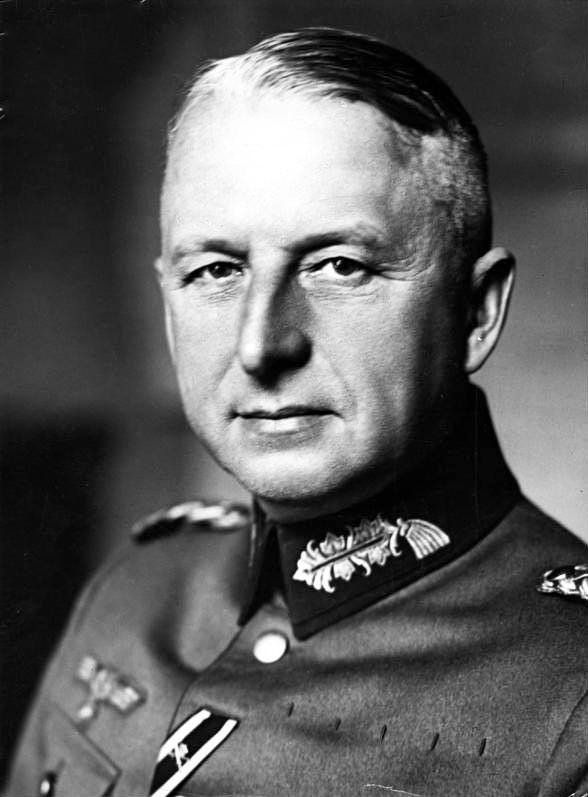Mengele Was Twice in U.S. Custody, U.S. Justice Dept. Report Confirms
October 9, 1992
Josef Mengele, the notorious Nazi death camp doctor,
was in U.S. custody twice in 1945 but was mistakenly released, the U.S. Justice Department has confirmed.
In a long-awaited report released Thursday, the department said Mengele, who died in 1979, was
held in two prisoner-of-war camps in Germany but released because the U.S. Army never learned he was a war crimes suspect.
The 197-page report, hailed by Jewish groups, said Mengele masqueraded as a member of the German army. But it is possible, though unconfirmed, "
that he was later registered and discharged under his own name," the report says.
"
It is likely that he passed as a regular soldier and was released in routine fashion in the chaotic conditions that prevailed in the summer of 1945," the report says.
Mengele then lived in hiding in Germany for several years before making his way to South America.
There is no evidence that U.S. authorities knew of or aided his escape from Europe, the report says.
The Justice Department document confirms information reported in a 1986 book by Gerald Posner, titled "Mengele: The Complete Story."
Posner’s information was based on a quasi-diary that Mengele kept in Brazil, which was turned over to a German magazine, Bunte, by Mengele’s son, Rolf, in 1985.
According to Posner, Mengele "told the American camp authorities his real name."
Posner said Thursday that the Justice Department report is "
not news in the sense of news." But he added that it has become "
news since everyone has forgotten" what he disclosed six years ago.
"
We are confirming and documenting some things that have been said before," acknowledged Eli Rosenbaum, principal deputy director of the Justice Department’s Office of Special Investigations, which prepared the report.
What is important about the report, he said, is that it is a confirmation, an actual documentation of the events, whereas Mengele’s diaries were more of "
an autobiographical novel."
The OSI, which prepared the report at the behest of the attorney general, acknowledged Posner’s help in the report.
The purpose of the investigation, begun in 1985, was to determine Mengele’s whereabouts and activities between 1945 and 1949, and his whereabouts in 1985, so that authorities in Germany or Israel could try him.
The investigation, by the United States, Germany and Israel, resulted in the disinterring in June 1985 of Mengele’s remains on a beach in Brazil.
The report was withheld from the public until now because of a U.S. understanding with the Germans and Israelis that it would not be published until the conclusion of DNA testing of Mengele family members, said Rosenbaum.
That took place this past March and confirmed beyond a doubt that the man buried near Sao Paulo, Brazil, was definitely the Auschwitz doctor known as the "angel of death."
He died of a stroke at age 67 while swimming off the Brazilian coast near Sao Paulo.
Rosenbaum blamed the delay in issuing the report on the Mengele family’s resistance to the testing.
The report also says there is no evidence American authorities knew of Mengele’s whereabouts during the long search for the physician, who conducted terrible experiments on Jews and took part in mass murders.
The report confirms that after Mengele was released from U.S. custody, he lived under an alias on a farm in the U.S.-occupied zone of Germany before going to Italy in 1949 and then used a false identity to travel by ship to Argentina.
He moved to Paraguay in 1959 and Brazil a year later.
The investigation established that while he was in hiding, he received funds regularly from his wealthy family in Germany.
This new information adds Mengele’s name to a list of Nazi war criminals who were captured by U.S. forces after the war and released. Some were even used by U.S. intelligence forces and helped to escape.
But that was not the case with Mengele.
"
Mengele fled Europe without U.S. assistance," the report says. "
There is no evidence that he ever had a relationship with U.S. intelligence. Nor is there any evidence that he ever entered the United States, either under his own name or any known alias."
In Los Angeles, the Simon Wiesenthal Holocaust Center applauded the release of the report. But, the center’s associate dean, Rabbi Abraham Cooper, said the findings "
confirm this mass murderer could and should have been put on trial for his crimes as early as 1946."
He said the report "
shows that no Allied government, including the U.S., was properly motivated or committed in the immediate months and years after the Second World War to systematically pursue Nazi war criminals."
Here in New York, the Anti-Defamation League welcomed the report but said it continued to have questions about the case.
Said Abraham Foxman, ADL national director, "
One can only wonder how so notorious and well-known a Nazi could have lived so long in freedom. Mengele’s death may have closed the book for some, but the story is yet to be complete for those who suffered directly or indirectly by his hand."
http://www.jta.org/1992/10/09/archive/m ... z2pnewQjlP 



